 |
| Category: Army
History/Flying Corps |

|
|
|
|
|
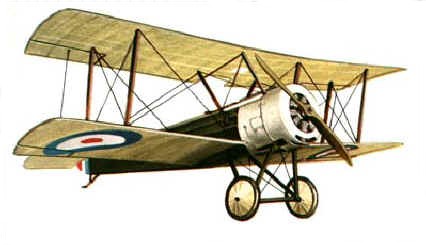 |
| Specs
- Sopwith Pup |
| Type |
fighter |
| Engine |
80
hp Le Rhone |
| Wing
Span |
26
ft 6 in (8.08 m) |
| Length |
19
ft 3 in (5.89 m) |
| Height |
9
ft 5 in (2.87 m) |
| Max
Speed |
111
mph (179 kph) |
| Max
Height |
17,500
ft (5,334 m) |
| Endurance |
3
hours |
| Armament |
1
machine-guns |
|
|

|
| Specs
-
Sopwith Camel |
| Type |
fighter |
| Engine |
130
hp Clerget |
| Wing
Span |
28
ft (8.53 m) |
| Length |
18
ft 9 in (5.72 m) |
| Height |
8
ft 6 in (2.59 m) |
| Max
Speed |
115
mph (185 kph) |
| Max
Height |
19,000
ft (5,774 m) |
| Endurance |
2
hours 30 minutes |
| Armament |
2
machine-guns |
|
|
An agile, highly
maneuverable biplane, the
Sopwith
Camel accounted
for more aerial victories than any other Allied aircraft during World
War I. Credited with destroying 1,294 enemy aircraft, it was called the
Camel due to the humped fairing over its twin machine guns. Much like a real
camel, this aircraft could turn and bite you. Noted for its tendency to
kill inexperienced flyers, many pilots feared its vicious spin
characteristics. Until sufficient speed was developed during takeoff,
Camel pilots maintained full right rudder to counteract the torque the
rotary engine. Failure to do so often resulted in a ground loop with the
Camel crashing on its starboard wingtip. During World War I, 413 pilots
died in combat and 385 pilots died from non-combat related causes while
flying the Sopwith Camel.
|
|
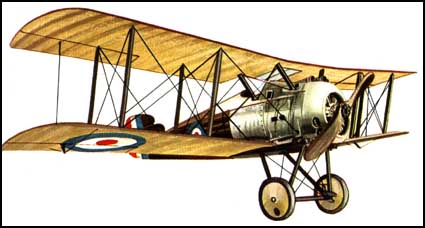
|
| Specs
-
Sopwith Snipe |
| Type |
fighter |
| Engine |
230
hp Bentley |
| Wing
Span |
30
ft (9.14 m) |
| Length |
19
ft 10 in (6.05 m) |
| Height |
9
ft 6 in (2.9 m) |
| Max
Speed |
121
mph (195 kph) |
| Max
Height |
19,500
ft (5,944 m) |
| Endurance |
3
hours |
| Armament |
2
machine-guns |
|
|
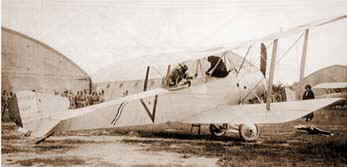
|
Sopwith
1½ Strutter. The
first British fighter equipped with a fixed, forward firing,
synchronized machine gun, the Sopwith 1½ Strutter was built in both one
and two-seater models. In the latter, the gas tank was dangerously
positioned between the pilot and observer. This prompted some airmen to
joke that the designer of the aircraft must surely have been
German. |
|
Other unusual features of
its design were the provision of air-brakes in the trailing-edges of the
lower wing-roots and a tailplane which was adjustable in flight. It was
the first British aeroplane to go into action with a synchronised
Vickers gun for the pilot. The observer's gun was at first carried on a
Scarff pillar mounting, then on a Nieuport ring and finally on the
excellent Scarff ring. With this improved armament the Strutter did well
as a two-seater fighter during the late summer and autumn of 1916. It
also was used for bombing, particularly by the R.N.A.S., which developed
a single-seat long-range bombing version.
Some Sopwiths then were
supplied to France. Compared with the Farmans and Breguet-Michelins
which formed the main body of the force, they showed up to advantage,
and the French decided to build the type in quantity. Unfortunately
production was very slow and when the first Sopwiths reached the front
in April 1917 they were quite obsolescent. There were three versions,
the SOP. 1 A2 (corps two-seater), the SOP.l B2 (two-seater bomber) and
the SOP. Bl (single-seater bomber), and various engines were installed;
the 110, 130 and 135 h.p. Clergets, and the 80, 110 and 130 h.p. Le
Rhones.
Throughout the summer and
autumn of 1917 the Sopwiths equipped most of the day-bombing
escadrilles; but with very feeble bomb-load and relatively weak
performance. The Corps d' Armee version was more useful, but as one
pilot said 'the Sopwith is a good tourer, no war-plane!' The type was
withdrawn from the Western Front early in 1918, and became an
operational trainer. |
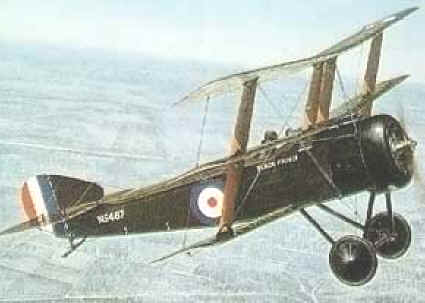 |
SOPWITH TRIPLANE
was used in combat by the Royal Naval Air Service.
The stack of three wings reduced wingspan and increased wing area making
it handle and climb better than biplanes. Visibility from the cockpit
was outstanding but the "Tripe" was slower and less heavily
armed than it's German opponents.
The Germans were
impressed with its performance and a captured Triplane inspired the
development of the Fokker DR.I. The Triplane was eventually withdrawn
from service and replaced with the Sopwith Camel.
|
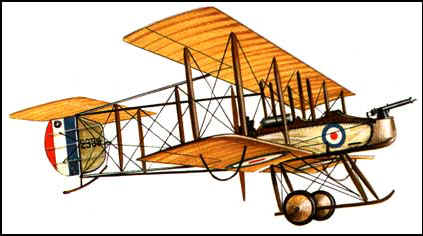 |
| Specs
- Vickers FB5 "Gunbus" |
| Type |
fighter |
| Engine |
100
hp Gnome Monosoupape |
| Wing
Span |
36
ft 6 in (11.13 m) |
| Length |
27
ft 2 in (8.2 m) |
| Height |
11
ft 6 in (3.51 m) |
| Max
Speed |
70
mph (113 kph) |
| Max
Height |
9,000
ft (2,743 m) |
| Endurance |
4
hours 30 minutes |
| Armament |
2
machine-guns |
|
|







